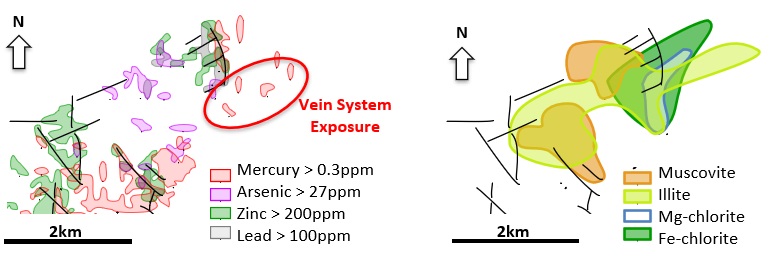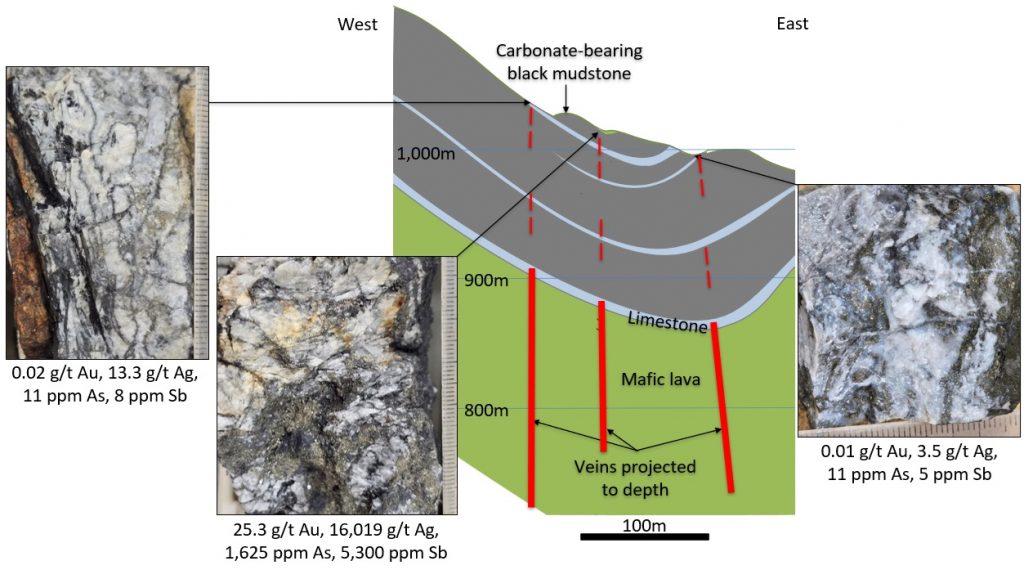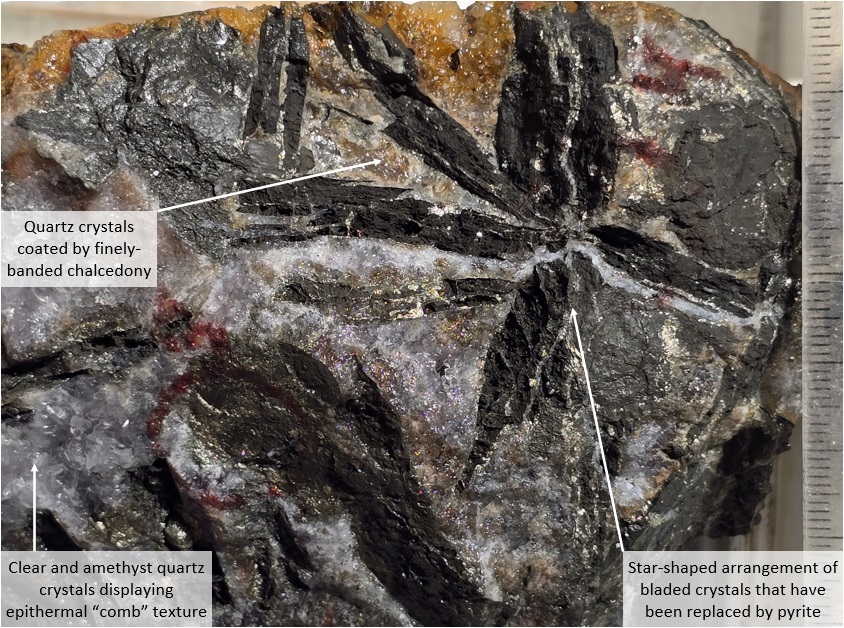
Solaris Resources (TSX:SLS)(NYSEAmerican:SLSR) has released an update on its exploration efforts at the Celestina target area, which is part of its broader district exploration program. The Celestina area is located east of the Warintza porphyry cluster and has become a focal point for the company’s search for epithermal deposits. The area is defined by a 4.5-kilometer by 3-kilometer zone of hydrothermal alteration, along with elevated levels of zinc, lead, arsenic, and mercury found in soil samples. These elements are typical indicators of potential mineralization, particularly in epithermal systems.
Highlight from the release are as follows:
- Follow-up rock chip sampling has returned high values of 16,019 g/t silver and 25.3 g/t gold, with other samples supporting the presence of an underlying silver-gold-base metals vein system
- Three parallel vein exposures were identified in creek beds within 100m on either side of the original breccia outcrop (link to release), located in a soft and chemically reactive mudstone unit that may have acted as a caprock to the hydrothermal system
- The conceptual exploration target at Celestina therefore lies in the underlying volcanic rocks that had full exposure to the hydrothermal cell while also having the properties to support robust vein and fracture formation
- Ongoing fieldwork to better define site selection for initial reconnaissance drilling
Recently, further prospecting outside of the previously identified anomalies led to the discovery of three parallel vein exposures in creek beds. These veins are located within 100 meters of the original breccia outcrop, which was reported in a press release on June 25, 2024. Follow-up sampling from these newly identified veins has returned significant results, including rock chip samples yielding up to 16,019 grams per ton (g/t) of silver and 25.3 g/t of gold. These findings have strengthened the company’s belief that there is an underlying silver-gold-base metals vein system at Celestina.

The veins identified so far have been found within a soft, chemically reactive mudstone unit. This mudstone may have acted as a caprock, potentially trapping hydrothermal fluids beneath it. As a result, the primary exploration target at Celestina is now believed to lie in the underlying volcanic rocks. These rocks would have been fully exposed to the hydrothermal system, making them more likely to host robust vein and fracture formations that could contain valuable mineralization.
Fieldwork at Celestina is ongoing, with efforts focused on locating additional vein exposures. By expanding the area covered, the team hopes to define the full extent of the vein system. More detailed mapping, sampling, and alteration studies are currently underway, aiming to better understand the zonation of the mineralization. In addition, geotechnical drilling is set to take place this month, with the goal of confirming the stratigraphic sequence of the area. These steps are essential for determining vectors that will guide the selection of sites for initial reconnaissance drilling, which will be crucial to confirming the presence of economically viable mineralization.
Solaris’ district exploration activities extend beyond Celestina. In the Caya-Mateo target area, geotechnical drilling has recently encountered evidence of epithermal clay alteration beneath overburden in a sandstone unit. This alteration is considered significant, as it indicates that hydrothermal activity occurred in the area. Drilling in the nearby Mateo area has also uncovered high-temperature alteration in volcanic rocks, further suggesting the presence of an epithermal system. The company plans to conduct additional mapping and sampling in the Mateo area, extending coverage toward the southeast where the core of the system is believed to lie.

While the results at Celestina are still in the early stages, they have provided positive indications that the area could host a significant mineral system. The discovery of multiple veins with high gold and silver content underscores the potential of the Celestina target, although much more work remains to be done to fully assess the area’s mineral potential. As exploration continues, Solaris will look to refine its understanding of the geological controls on mineralization and pinpoint the best locations for future drilling. If successful, these efforts could add value to the company’s broader Warintza Project, which remains its flagship asset.



 Follow us on Twitter
Follow us on Twitter Become our facebook fan
Become our facebook fan










Comments are closed.